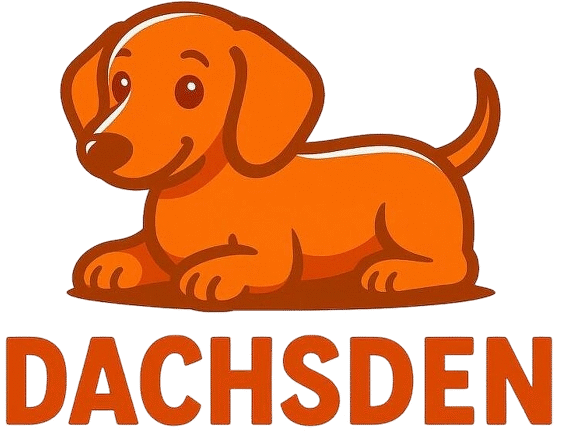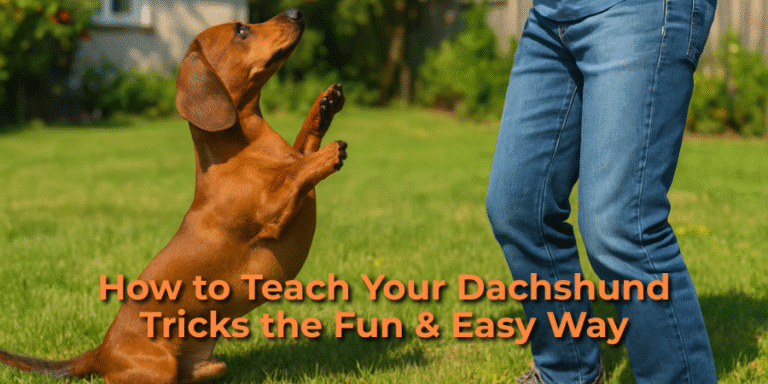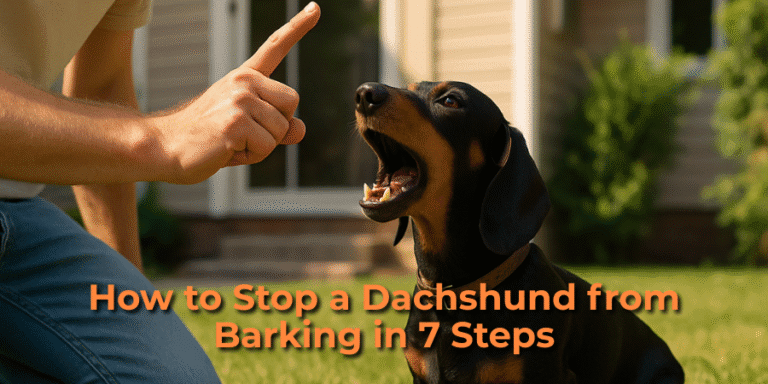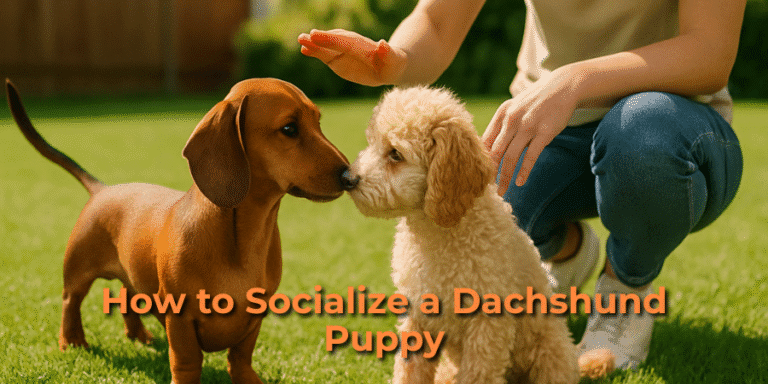Are Dachshunds Good with Children? Practical Tips & Guide
If you’re adopting a wiener dog and have children at home, you might be wondering whether dachshunds are a good match for kids or babies. Like any breed, their temperament can vary, and the chance of them getting along depends on both nature and nurture. Some dachshunds may instantly adore a child, while others might show dislike based on past interactions or lack of socialisation.
As a reader of many favorites from doxie lovers, I’ve seen both outcomes, so it’s wise to introduce them properly. From my experience, when bringing a pet into family life, especially a small, energetic dachshund, there are important considerations.
Their playful disposition, loyalty, and ability to adapt make them a potentially compatible choice for families. Their strong bonds with adults and kids alike often grow through positive interactions, leading to a joyful household. This article will discuss the truth behind their behaviour and how to help them and your family thrive in each other’s presence.

Are Dachshunds Good with Children? – Short Answer
Dachshunds can be good with children when properly socialized from a young age. Their affectionate and playful nature makes them great companions, but supervision is essential due to their strong personalities and sensitivity to rough handling.
Dachshund Temperament with Children
Dachshunds are known for their loyalty and affectionate nature, making them great candidates as devoted family pets, especially in homes with children. These small dogs often build strong emotional bonds with kids, offering both companionship and emotional warmth within the home setting. Their inherent friendliness and playful traits help shape a positive, trust-based relationship between the dog and the child.
In my experience raising a dachshund in a busy household, their engaging personality brings a lot of fun and laughter. Their loving nature and energy make them a joyful addition to any family, especially when introduced early and respectfully to children. That said, some people often wonder, Why Are Dachshunds Considered the Worst Breed? due to their strong-willed nature—but when well-trained, they thrive in families.
Age of Children: Why It Matters
Dachshunds can be excellent with children, but the child’s age plays a big role in how well they interact. Babies and toddlers are often less interactive and more stationary, making them less scary for a dog that is still learning to feel safe. If a puppy and a baby are introduced early, they usually grow together, forming a friendly bond. Dogs that are exposed to kids from a young age are more likely to love being around them, as they have no negative biases and see the child as part of their household.
On the other hand, older children need to be taught how to properly treat and respect a pet, especially a small breed like the dachshund. It’s crucial that kids know how to handle animals and not crawl over or scare them.
A dog’s experience with children can vary depending on how well the family manages early introductions, and making sure that both the dachshund and the child feel safe is the key to success. From what I’ve seen, some dogs naturally prefer babies, while others take time to warm up, but with patience, most can be very affectionate and loving companions.
How to Introduce a Dachshund to Children
Communicate Expectations with Parents and Children
When introducing your dachshund to children, whether they live in your home or are just little guests, it’s important to start by communicating with the parents. Share whether your pup is new to the concept of kids or requires slow greetings, so everyone is on the same page. Setting clear expectations helps prevent surprises and ensures a smoother introduction. Most people appreciate being told how to approach your dog, and this early step helps build mutual respect and understanding.
Use Body Language and Level-Based Introductions
For both public meetings with strangers and in-home encounters, positioning matters. Crouch or sit on the floor to get down to your dog’s level, allowing them to feel more confident and less startled by the presence of a tiny, excited human. Kids should also be asked to move slowly and quietly to avoid overwhelming your dachshund. Let your dog sniff the child’s hand at their own pace—this gives them time and space to process and accept the situation without feeling forced. This approach helps avoid unnecessary barking, which often leads owners to wonder, Why Do Dachshunds Bark?
Reinforce Good Behavior and Allow Opt-Outs
Keep treats handy and use positive reinforcement during every encounter. If your dachshund is behaving calmly or showing positive body language, such as sniffing or wagging their tail, reward them. Generously dole out goodies to help your pup build a positive association with children. It’s okay if your dog begins baring their teeth or growling—don’t force the interaction. Respect their signals and give them an opportunity to back out. Forcing a canine companion to interact when anxious can be extremely detrimental to future socialization.
Create a Safe Space and Supervise All Interactions
Make sure your dachshund is crate trained and has a safe space where they can retreat if they start to feel stressed or frustrated. Teach your children that when your dog is in the crate, they must not bother them. Never leave your dachshund unsupervised with a baby or small child, especially in the early stages when they’re not yet well acquainted. These tips, when followed properly, will make the introduction smoother and help your dachshund build a lasting, loving bond with the kids in your life.
Teaching Children How to Respect Dogs
Understand a Dachshund’s Hunting Instinct
When a kid and a Dachshund share the same home, it’s important to teach the child that these dogs were originally bred to hunt small game. Their prey drive can easily be triggered by fast, erratic movement, especially from children who like to run around. That’s why many owners ask, Do Dachshunds Get Along with Other Pets? because this hunting instinct can influence their behavior beyond just people
If the child moves too quickly or unpredictably, it may result in the Dachshund chasing, nipping, or even the child being pushed over. Teaching children to stay calm and move slowly around Dachshunds can prevent many issues.
Gentle Touch is Key
Children should also be taught how to pet gently. Many don’t realize that rubbing the fur in the opposite direction it naturally grows can feel uncomfortable or even irritating to the dog. Likewise, children should never treat a dog like a pull toy—pulling on the dog’s tail or ears can cause pain. A dog in pain is much more likely to lash out, even if they’re normally well-behaved. Demonstrating how to touch dogs kindly helps prevent accidents and builds trust.
Recognize Warning Signs
Another essential lesson is teaching children to recognize what it looks like when a dog wants to be left alone. Dachshunds, like many breeds, will give warning signs such as growling, bearing their teeth, or trying to escape when they’re uncomfortable. If a child continues offensive behavior despite these warnings, the dog may feel forced into a fight response because it can’t choose flight. It’s crucial that kids learn to respect these signs instead of pushing boundaries, which can lead to dog bites.
Teach Body Language and Calm Behavior
Dog bites often occur when kids don’t understand dog body language. That’s why children should be shown how to demonstrate calm, respectful actions and to appreciate when a dog needs space. Helping them learn these behaviors not only protects both the child and the dog, but it also creates a strong, safe bond between them. With patience and guidance, your Dachshund can become a confident and trusted companion in a family with children.
Supervising Dachshunds With Children
When integrating a dachshund into a family with young children, constant supervision during interactions is the most important factor to consider. Regardless of the dog’s training or gentle disposition, close monitoring is necessary to prevent inadvertent rough play or possible misunderstandings.
A safe environment created through consistent observation helps foster a positive relationship and build a strong sense of security between the dachshund and the children. It’s also a valuable opportunity to observe and reinforce good behaviours, laying a solid foundation for a respectful and trusting bond.
Teaching children how to interact appropriately and establishing boundaries for both parties encourages healthy coexistence. An educational approach helps children grow in responsibility, while ensuring the dachshund also understands its role in the family dynamic. This is especially helpful when dealing with questions like Are Dachshunds Naughty?
By promoting a healthy, balanced home and involving the entire family in the training process, you can strengthen the bond with each member, leading to a cohesive and well-behaved unit.
Training and Socialisation Tips
Early socialisation is a key aspect of successfully integrating dachshunds into a family with children. Exposing your dog to various experiences, especially positive interactions with children at a young age, helps them become more adaptable and comfortable with family life.
This kind of early exposure contributes to a well-rounded, sociable temperament, and enhances the dachshund’s compatibility within the family environment. To further encourage this growth, include regular socialisation activities like visits to parks, or arranging playdates with other dogs and children.
These experiences help build social skills and develop lasting confidence, making your dachshund a more stable and happy member of the household.
Size and Space Considerations
The size of a dachshund, especially the miniature variety, makes them well-suited for families with children. Despite their small stature, it’s imperative to educate kids about the importance of handling them gently and respectfully. Because they’re more approachable to young children, proper understanding and guidance on how to interact safely can promote an environment where both species coexist peacefully.
Their manageable size also facilitates indoor living in houses, apartments, or flats, making dachshunds adaptable companions who blend easily into family life. When we brought home our puppy, it was a serious consideration—we lived in a small house with limited outdoor space, so choosing the right breed that would live comfortably was essential.
Final Thoughts
Not all dachshunds are the same, but many are capable of being good with kids and children, especially if they’re introduced to babies while still a puppy. It’s more likely they’ll happily intermingle and grow to love the young, especially when regular exposed to different interactions early. Adult dachshunds who are stuck in their ways may not be as open to living with children, and in some cases, the best outcome is peaceful coexisting without much interaction.
Unfortunately, some will never truly adapt—that’s always a risk with any dog. But by understanding how to properly handle these moments, teaching kids to act respectfully, and watching for warning signs in a dog’s body language, we can ensure everyone stays safe and happy. Even unexpected behaviors—like howling—can be explained with knowledge about Why Do Dachshunds Howl? and what it means for their emotional state.
FAQ’s
Are dachshunds ok with children?
Dachshunds naturally love being around people and crave attention, which is why they generally get along well with children of all ages. However, it’s important to remember to recognise your dog’s body language early to stop any potentially stressful situations before they escalate.
You should always supervise your dog when interacting with children or vulnerable adults, ensuring everyone feels safe and comfortable.
Is a Dachshund a good family dog?
A Dachshund can be a good family dog, as they are generally friendly and loyal dogs. However, their independent nature and sometimes stubborn behavior can make training a bit more challenging, especially for first-time dog owners.
Is a Dachshund aggressive or not?
According to a study, the Dachshund—also known as the wiener dog—ranked as the number one aggressive breed out of the 33 dogs surveyed. It found that one in five dachshunds have bitten or tried to bite strangers, a similar number have attacked other dogs, and one in 12 have even snapped at their owners.
What are the pros and cons of dachshunds?
Dachshunds can be affectionate, playful, and loving, making them good guard dogs that are adaptable to different environments and have low maintenance grooming needs. However, they are also known to be vocal, stubborn, and independent, often wary of strangers, and prone to mobility problems. Understanding these pros and cons helps determine if they’re the right fit for your family.







